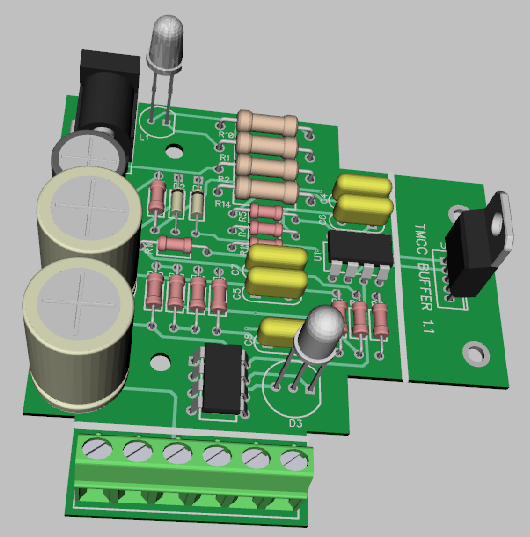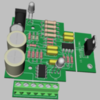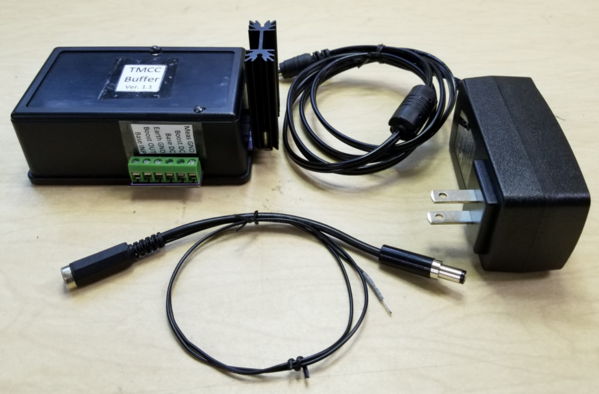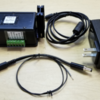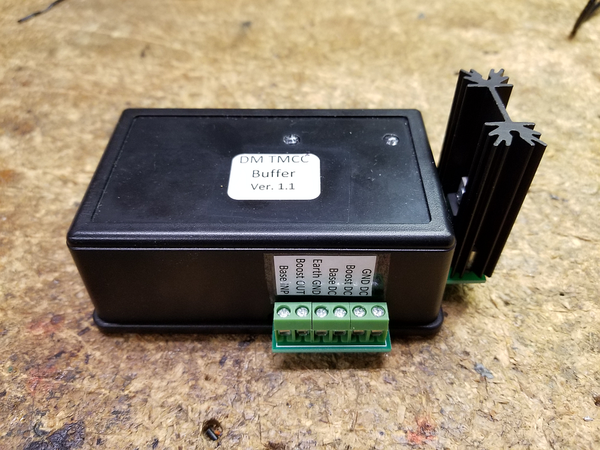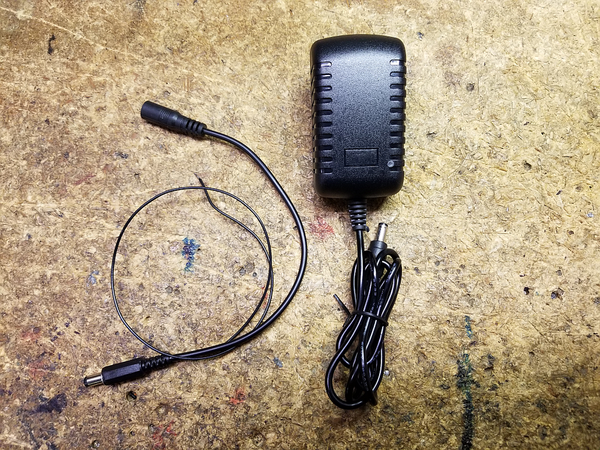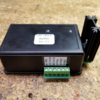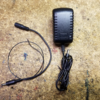This is intended to be a continuation of the original thread for the TMCC signal booster to avoid confusion. I was working with Dale to create the "production" version of the buffer. That involved creating the PCB and building some units. Sadly, Dale passed away before we really got started, so without his input and documentation, the project languished for some time until recently. I enlisted the aid of another forum regular, PLCProf, to assist in recreating the schematic and getting to the point of confidence that we had a working design again.
Here's a recap of where I started after Dale's passing.
As some of you may know, I was working with Dale on this project, my end was to be creating the PCB and packaging once the design was proven. Due to Dale's untimely passing, the project was stalled. Since I never got to actually receive the final schematic, I did manage to round up the prototype. I enlisted some aid in reverse engineering and testing the prototype and the project is moving forward. We have reverse engineered the prototype and are making some tweaks. I'm hoping to maybe have a prototype PCB at York next month, however timing may be tight, so that's only about 50/50 right now. However, rest assured that it's coming soon.
I have what I believe is a completed schematic and I've done a board layout that should work with the enclosure I've selected. I haven't received the boxes yet, so there could be changes, one of the delays I mentioned. The "production" unit will have an off-the-shelf 24V power brick that is detachable. The terminal strip you see on the side will be the "Euro" style, but my 3D library didn't have those. Those terminals are where all the connections to the buffer are made. The board projection with the TO-220 package will have a heatsink mounted to the two large holes and also be outside the box, this is to allow air circulation for cooling the buffer chip. The white line on the board is where the enclosure wall will be, a slot allows the board projections. There is a power LED that projects through the top of the case, and also some signal level LED's that indicate a poor or missing base signal and also a "good" base signal. Connections are also provided that output a DC level corresponding to the signal strength of the input base signal and the output buffered signal.
Discussions should continue in this thread.








